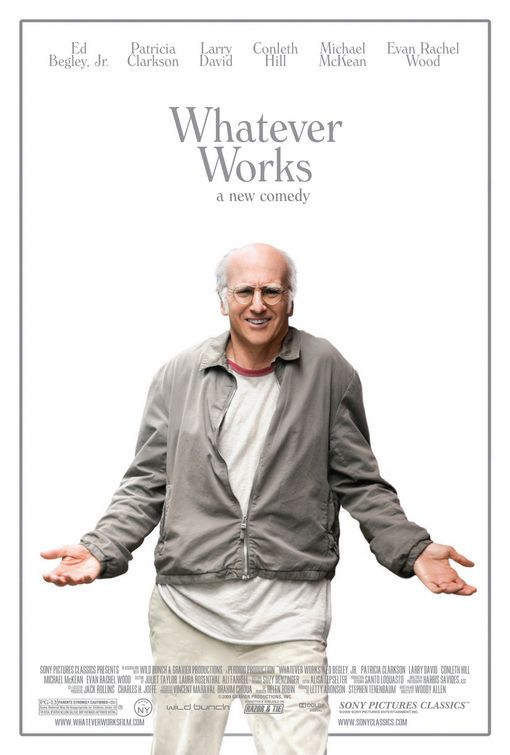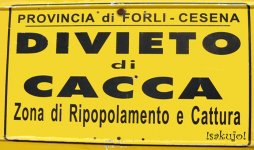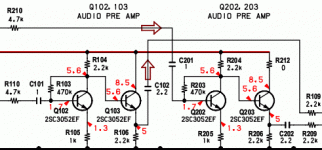No, it is a pseudonym.
You'd better stay clear of the woods of Emilia Romagna, Italy.

Attachments
You'd better stay clear of the woods of Emilia Romagna, Italy.
and it should be easy to improve the audio output section. That should be fun.
Frankly I'm speachless. That incredible digital engine which blows away most of what came before and then this....
Attachments
Frankly I'm speachless. That incredible digital engine which blows away most of what came before and then this....
Perhaps the digital designers are not experienced in analog. This really looks like a cut and paste from a prior design. Note the 2.2K output series resistors, these allow for a Y to mono.
I just got in 4 of these for a project, they were just plain cheap! So that could also be a reason... designing for a price point.
I think the upside is that very few are scratch building any more. So here is a chance to make a significant improvement at just above the newbie level!
All chains have a weakest link.
Frankly I'm speachless. That incredible digital engine which blows away most of what came before and then this....
Nasty! That Hfe-dependant biasing is the one classified as a "disaster" in Horowitz & Hill [fig 2.19]
Beats an IC op amp, in my opinion.
Never surrender!
I think that this stage merits a simple fet follower with one fet used as a current source load and the other as a follower. Drive cap could be reduced in value. Output cap still up for grabs, so to speak.
I must admit, I still don't think too much of standard IC op amps, even though I sometimes design with them.
I must admit, I still don't think too much of standard IC op amps, even though I sometimes design with them.
I hope that I can make a point, here. Given Sony's need to set the proper level and do it cheaply, the solution they used seems to work. However, the ceramic caps in series worry me. Now don't take me wrong. I see that Sony has to work with a single 8.5 V supply, and this requires coupling caps. Hopefully, from their perspective, small and cheap ones.
I tried the same solution once, long ago, attempting to 'improve' a vacuum tube Fisher KM-60 tuner by adding a Motorola multiplex chip. And what cap did I use? A 2.2 uf ceramic cap. I got the circuit to work, BUT I got listener fatigue over time, and went back to the original Fisher circuit, or left it in mono. I, too, believed that high value ceramic caps were the right solution at the time. Later when I measured them more effectively, I realized that they were the worst capacitors I have ever measured.
However, it was listening tests that clued me in, first.
I tried the same solution once, long ago, attempting to 'improve' a vacuum tube Fisher KM-60 tuner by adding a Motorola multiplex chip. And what cap did I use? A 2.2 uf ceramic cap. I got the circuit to work, BUT I got listener fatigue over time, and went back to the original Fisher circuit, or left it in mono. I, too, believed that high value ceramic caps were the right solution at the time. Later when I measured them more effectively, I realized that they were the worst capacitors I have ever measured.
However, it was listening tests that clued me in, first.
Now, let us get into the comparison between an IC or a jfet follower, for the purpose of buffering the output filters from the outside world.
Two decades ago, I was put in the same position with Parasound, and what we would use to create a convenient circuit that we could operate either balanced or unbalanced input.
The Taiwanese had suggested using a dual fet input op-amp, using 47K ohm feedback resistors. This design seemed to do the job, by every measurement that I would normally do. It was not super quiet, given the fact that the 47K resistors were also in series with some of the inputs, but it measured well, and easy to make.
All it required was a dual fet input op-amp, that was unity gain compensated.
They originally used an LF353, but I ultimately chose Scott's Wurcer's AD712, as it was better designed and had better offset.
Well, the HCA 2200 was born, and it went for review at 'Stereophile' when they were still in New Mexico. I went there, myself, to answer any questions.
However, they REJECTED the design, and privately told me to go back to the design bench, as it didn't reflect positively on my design ability.
I determined that the only thing that I had little control of was the IC op amp, so I designed it out, using instead a jfet follower to do essentially the same job as the IC did. We re-submitted the unit, and it got a B rating in Stereophile. Not bad, exactly what I would have expected.
Unfortunately, this jfet follower was made wrong at the Taiwanese factory. I specified 'V' 2sk170's and they used 'G'. I had the bias resistors set for 'V' so this added insult to injury, AND there was a measurable amount of 2'nd harmonic distortion that did not meet the specifications of the amplifier, and a unit had been sent to 'The Audio Critic' with our old friend Dr. Rich, who just loves to badmouth anything he can. And he ran me 'through the coals' for even thinking that an open loop fet follower could be used instead of an IC. This is when I was first apprised that there even was a problem. Nobody from the magazine told me about it. Of course, I immediately contacted Parasound and insisted that the problem be resolved.
Later, 'The Audio Critic' tested another later design and found that it met specs. It's amazing what happens when the right parts are used.
On the other had, Analog Devices got wind that I had removed the AD712, and a letter of protest was generated. As Scott knows, IC's are virtually perfect, especially his, and I must be imagining things again. The problem is: I didn't find the problem, 'Stereophile' did, and I wasn't at the listening tests.
As I keep trying to say: 'Whatever works!'
Two decades ago, I was put in the same position with Parasound, and what we would use to create a convenient circuit that we could operate either balanced or unbalanced input.
The Taiwanese had suggested using a dual fet input op-amp, using 47K ohm feedback resistors. This design seemed to do the job, by every measurement that I would normally do. It was not super quiet, given the fact that the 47K resistors were also in series with some of the inputs, but it measured well, and easy to make.
All it required was a dual fet input op-amp, that was unity gain compensated.
They originally used an LF353, but I ultimately chose Scott's Wurcer's AD712, as it was better designed and had better offset.
Well, the HCA 2200 was born, and it went for review at 'Stereophile' when they were still in New Mexico. I went there, myself, to answer any questions.
However, they REJECTED the design, and privately told me to go back to the design bench, as it didn't reflect positively on my design ability.
I determined that the only thing that I had little control of was the IC op amp, so I designed it out, using instead a jfet follower to do essentially the same job as the IC did. We re-submitted the unit, and it got a B rating in Stereophile. Not bad, exactly what I would have expected.
Unfortunately, this jfet follower was made wrong at the Taiwanese factory. I specified 'V' 2sk170's and they used 'G'. I had the bias resistors set for 'V' so this added insult to injury, AND there was a measurable amount of 2'nd harmonic distortion that did not meet the specifications of the amplifier, and a unit had been sent to 'The Audio Critic' with our old friend Dr. Rich, who just loves to badmouth anything he can. And he ran me 'through the coals' for even thinking that an open loop fet follower could be used instead of an IC. This is when I was first apprised that there even was a problem. Nobody from the magazine told me about it. Of course, I immediately contacted Parasound and insisted that the problem be resolved.
Later, 'The Audio Critic' tested another later design and found that it met specs. It's amazing what happens when the right parts are used.
On the other had, Analog Devices got wind that I had removed the AD712, and a letter of protest was generated. As Scott knows, IC's are virtually perfect, especially his, and I must be imagining things again. The problem is: I didn't find the problem, 'Stereophile' did, and I wasn't at the listening tests.
As I keep trying to say: 'Whatever works!'
I think that this stage merits a simple fet follower with one fet used as a current source load and the other as a follower. Drive cap could be reduced in value. Output cap still up for grabs, so to speak.
I must admit, I still don't think too much of standard IC op amps, even though I sometimes design with them.
Before we "diss" the designers, we should note that reports say there is enough processor noise to disrupt am reception unless you move the antenna away from the case.
The output stage has modest gain and I suspect bandwidth. An FET follower would work but with less output level.
Some of the "audio" purpose built opamps I have used would probably perform poorly due to the "hash" surrounding it.
So tweaking it is not quite so simple. I would probably use an FET input opamp with a wide bandwidth set up as a 100K or so low pass filter.
Now, let us get into the comparison between an IC or a jfet follower, for the purpose of buffering the output filters from the outside world.
Two decades ago, I was put in the same position with Parasound, and what we would use to create a convenient circuit that we could operate either balanced or unbalanced input.
The Taiwanese had suggested using a dual fet input op-amp, using 47K ohm feedback resistors. This design seemed to do the job, by every measurement that I would normally do. It was not super quiet, given the fact that the 47K resistors were also in series with some of the inputs, but it measured well, and easy to make.
All it required was a dual fet input op-amp, that was unity gain compensated.
They originally used an LF353, but I ultimately chose Scott's Wurcer's AD712, as it was better designed and had better offset.
Well, the HCA 2200 was born, and it went for review at 'Stereophile' when they were still in New Mexico. I went there, myself, to answer any questions.
However, they REJECTED the design, and privately told me to go back to the design bench, as it didn't reflect positively on my design ability.
I determined that the only thing that I had little control of was the IC op amp, so I designed it out, using instead a jfet follower to do essentially the same job as the IC did. We re-submitted the unit, and it got a B rating in Stereophile. Not bad, exactly what I would have expected.
Unfortunately, this jfet follower was made wrong at the Taiwanese factory. I specified 'V' 2sk170's and they used 'G'. I had the bias resistors set for 'V' so this added insult to injury, AND there was a measurable amount of 2'nd harmonic distortion that did not meet the specifications of the amplifier, and a unit had been sent to 'The Audio Critic' with our old friend Dr. Rich, who just loves to badmouth anything he can. And he ran me 'through the coals' for even thinking that an open loop fet follower could be used instead of an IC. This is when I was first apprised that there even was a problem. Nobody from the magazine told me about it. Of course, I immediately contacted Parasound and insisted that the problem be resolved.
Later, 'The Audio Critic' tested another later design and found that it met specs. It's amazing what happens when the right parts are used.
On the other had, Analog Devices got wind that I had removed the AD712, and a letter of protest was generated. As Scott knows, IC's are virtually perfect, especially his, and I must be imagining things again. The problem is: I didn't find the problem, 'Stereophile' did, and I wasn't at the listening tests.
As I keep trying to say: 'Whatever works!'
Photos from Whatever Works
OT: comic seg

not the best photo from the movie BTW
.

not the best photo from the movie BTW
.
On the other had, Analog Devices got wind that I had removed the AD712, and a letter of protest was generated. As Scott knows, IC's are virtually perfect, especially his, and I must be imagining things again. !'
Folklore. John do you think it supports your position to attack 30yr. old work that we thought at the time made things better? Really, a self biased NPN, a 1964 GE tutorial circuit is only compromised by the coupling capacitors? Your fans need to stretch their envelope of acceptance.
As a fan of both, my envelope is bungy stretching back and forth, i'm still waiting for stress fatigue to step in.
Mr W,
speaking of folklore revisited, so i take it your back is not covered with Japanese Yakuza tattoo's and you haven't done frequent runs to Havana on a Cigarette power boat with loads of AD797, in exchange for genuine Cuban Cohibas ?
(i never know what to believe from those Scully and Mulder characters)
Mr W,
speaking of folklore revisited, so i take it your back is not covered with Japanese Yakuza tattoo's and you haven't done frequent runs to Havana on a Cigarette power boat with loads of AD797, in exchange for genuine Cuban Cohibas ?
(i never know what to believe from those Scully and Mulder characters)
http://www.diyaudio.com/forums/atta...ls-blowtorch-preamplifier-part-ii-sonyckt.gif
I'd just off the follower .....
That simple 1 stage SS voltage amp
is a proven "workhorse of the industry"
AND sounds good ......
I'd just off the follower .....
That simple 1 stage SS voltage amp
is a proven "workhorse of the industry"
AND sounds good ......
- Status
- Not open for further replies.
- Home
- Member Areas
- The Lounge
- John Curl's Blowtorch preamplifier part II

